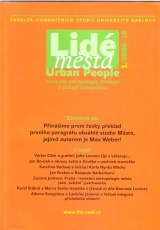Body and Catastrophic State
The pathological effect in Havlíček´s Petrolejové lampy
DOI:
https://doi.org/10.14712/12128112.3837Abstract
The writer Jaroslav Havlíček is undoubtedly one of the great authors of the 20th century, along with Artaud, Beckett and others who have taught us about the organism and its fragility at least as good, if not better than theoretical thinking which explicitly examines the issue at hand. However, to say that Havlíček’s Petrolejové lampy (“Kerosene lamps”) is a great novel about the pathological means to find ourselves dangerously close to some kind of cliché. Not only because such a statement expresses merely an obvious fact, instantly clear to everyone that might simply leaf through the book, but also because the issue of what is normal and what is pathological enters the theoretical reflection perhaps much too persistently and – we need not fear to say - it increasingly shows some sterility. In Havlíček, however, we find something which, in connection with this issue, can be regarded as a most unusual starting point that can certainly add some strength and curiosity to the reflection: an organism is examined - not merely described - in terms of the effect of the pathological. We talk about the effect because a pathological state does not only determine the situation and the behaviour of a particular organism but also, and above all, the interaction with other organisms.
Downloads
Published
How to Cite
Issue
Section
License

This work is licensed under a Creative Commons Attribution-NonCommercial-NoDerivatives 4.0 International License.



